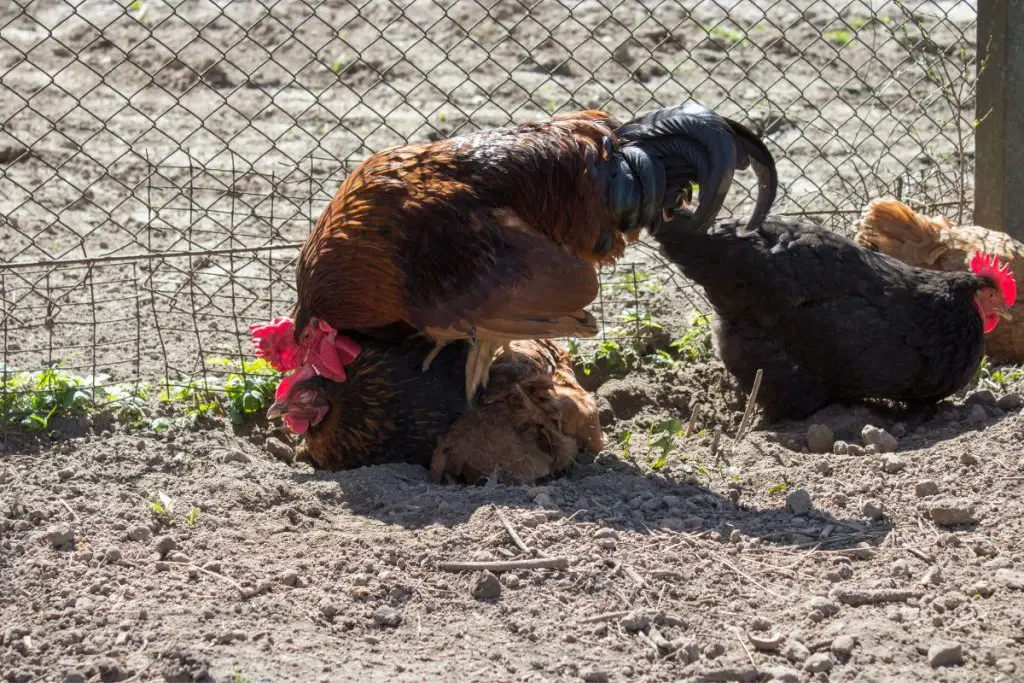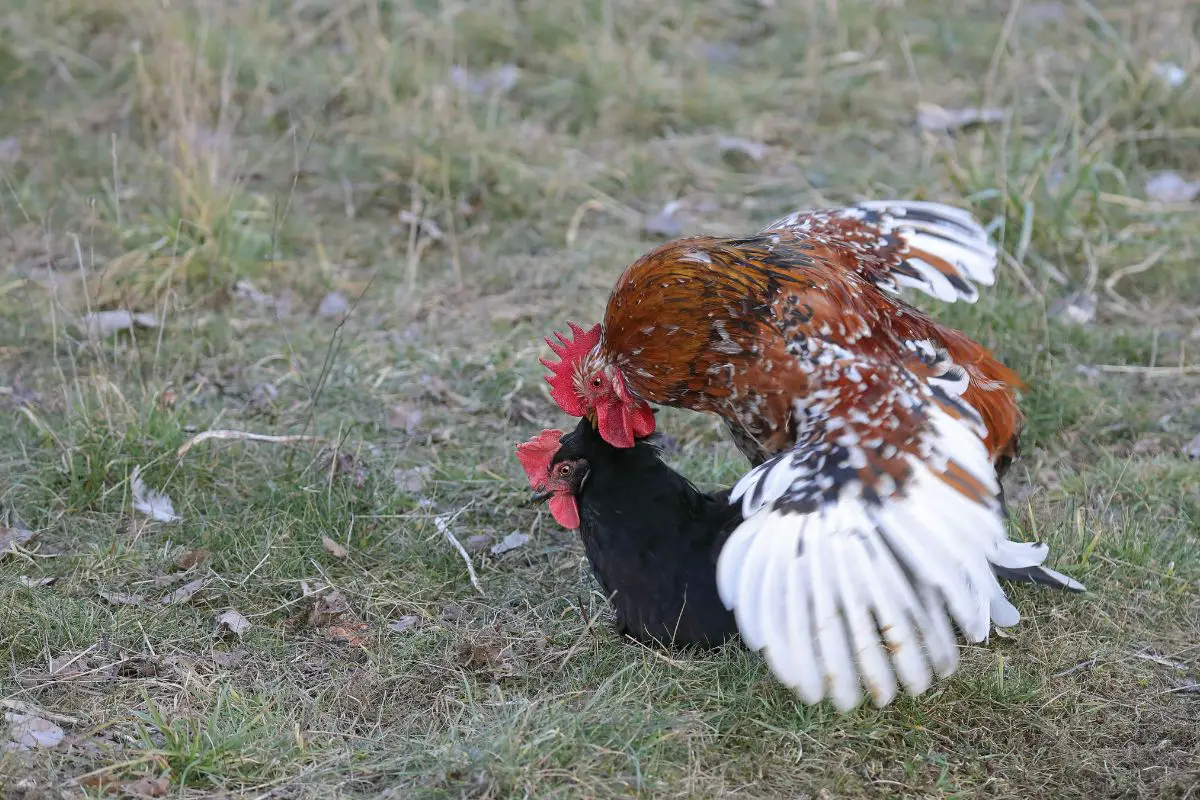Roosters don't have penises, so chickens mate by having the rooster penetrate a hen's cloaca with his papilla and this can occur several times per day. Prior to this, a rooster must "prove" his worth by bringing food to a suitable hen and performing a short rooster dance to win her approval.
The mating process for backyard chickens doesn’t need to be a mystery. In this article, we will discuss courtship behaviors between roosters and hens, and the mechanics of how these chickens mate and produce fertilized eggs. Fertilized eggs will most often lead to…you guessed it – baby chicks!
Table of Contents
At What Age do Chickens Mate?
Before we get into the mechanics of how chickens mate, it is important to know when chickens are able to mate. Pullets (young hens) will be ready for mating and may have a chance of producing after they have begun to lay eggs, typically between 6 and 8 months of age. Cockerels will show great interest in mating, and usually will begin fathering chicks when they are 11 to 12 months old.
What Time of Year do Chickens Mate?
While chickens can mate year-round, you will see more mating activity when hens experience a rise in their hormone levels and are more receptive. This typically occurs during warmer months, so you will more often see mating activity during Spring and Summer.
What types of Mating Behaviors do Chickens Have?
Before a rooster can mate with a hen, he must first earn her approval through courtship. Roosters will often try a couple of different tactics to get a hen to notice and accept his advances, the most common being tid-bitting, which is usually followed by a rooster‘s mating dance.
What is Tid-Bitting?
Tid-bitting is when a rooster will find choice bits of food with which to tempt a hen, and present them to her with a bit of showmanship. His goal is to find food she likes, and to prove to her that he can provide for the flock. Once he has food that he thinks she’ll like, he will present it to her by bobbing his head up and down to catch her attention, while making clucking or crowing noises.
Female chickens may or may not acknowledge that they have noticed his efforts, but tid-bitting will often increase the chances that a rooster is allowed to mate.
What does the Rooster Dance Look Like?
Once a rooster is ready to make his move, he will then begin the mating dance. He will approach the hen and circle her, often with both wings extended toward the ground, and quiver his body as he shuffles around her. This doesn’t last long – usually only a few seconds.

During this brief time, a hen will size up her potential suitor. If he has healthy, shiny feathers and a bright red wattle, with an enticing dance – she may accept him.
If a hen is receptive she will indicate her approval by lowering her body towards the ground, and spreading her wings out, allowing him to mount her by hopping onto her back.
So How Does a Rooster and a Chicken Mate?
When a rooster hops onto a hen‘s back, he will begin treading, to find his balance. He may use his beak to peck at her neck feathers for the same reason.
It is a delicate operation because roosters do not have penises and do not penetrate female chickens in order to achieve fertilization like most mammals. Roosters instead have a papilla, which carries a rooster‘s sperm.

Roosters mate with a hen by pressing his papilla near a hen’s vent, and transferring the sperm to the cloaca in what is called a cloacal kiss. The transfer only has a chance of success if the hen opens her cloaca to allow the sperm to enter her oviduct- and a hen‘s oviduct must have an egg or produce one within the 5 days following the mating in order for the chicken egg‘s fertilization to be successful.
This act, while delicate, can also appear to be rough, and people who are new to breeding chickens may worry that a hen is being harmed. It is good to keep a close eye on the process as young, eager cockerels may unintentionally cause feather loss to a hen, and scratch her back with his feet while mating.
Chicken Mating and Injuries
If you notice that your female chickens have more than superficial wounds when mating with a particular rooster, it may be a good idea to create a chicken saddle, which is something that you can diy, and slip on them under their wings prior to mating, to help protect your hen’s back from harm.
If you opt for a chicken saddle, be sure to check under the saddle daily to ensure the health of the skin, and to make sure there are no mites or lice present as they are attracted to warm, moist areas.

If you have enough hens, and a rooster, it is inevitable that you will increase the size of your chicken coop in no time. Remarkably, and unlike us male humans, roosters can mate 10 to 30 times per day, and carry a sperm load up to 5 billion.
However, it is worth noting that a hen with a brood to look after will not allow a rooster to mate with her for 8 to 10 weeks, so keep this in mind when deciding the size of your flock.

